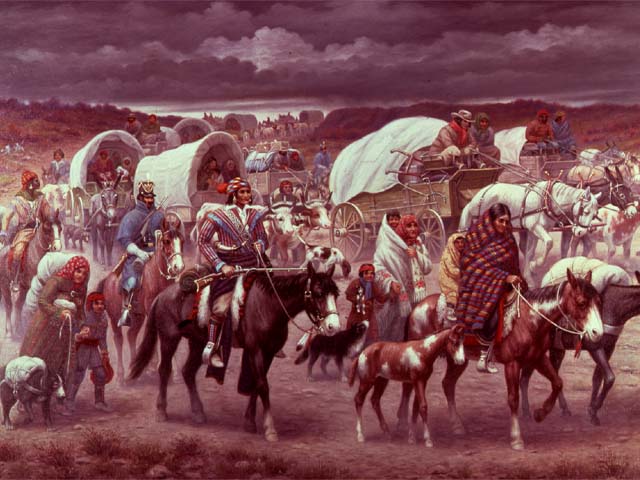American history has plenty of dark points. While, over the years, hardships and struggles have been experienced by all, there was perhaps no time in the known American history as trying as the Trail of Tears. Commencing in 1830, the infamous movement came about as a result of President Andrew Jackson, who wanted to move further into Native American land. The then-president passed a law, granting him power to take control of formerly-Native land in order to use it for modern development. While some tribes moved peacefully, many did not and those who stood up to the law were later forced to make a grueling journey west into present day Oklahoma. The route taken was so riddled with disease, malnourishment and exposure, that it was soon named the Trail of Tears, with between 3 and 4,000 people perishing on the road.
While the chilling history of the time is well known, there are a great many facts that remain hidden from view. By taking a closer look at them, we can begin to understand a little more about the brutal time that shaped the country so suddenly.
Davy Crockett was a scout for President Jackson before the Trail of Tears was formed but when he learned of Jackson’s intentions, he soon broke ties. While he was warned that his behaviours in according to the Native American removals would cost him his seat in Congress, Crockett held firm to his beliefs, calling the act unjust. Despite losing and subsequently gaining a seat in the Congress, Crockett never changed his mind and in the end, he fled the U.S. for Texas, where he later died.
Despite its name, the Trail of Tears was made up of a number of routes. The first group of Cherokees were escorted through Tennessee, Ohio, Mississippi and Arkansas, although extreme weather soon made the route impassable. In a bid to continue their effort, officials changed the trip, taking the Cherokees on a number of paths through overland routes which varied in distance. The route best known today overlaps with a great deal of Route 66, immortalized under a new name.
Understandably, life was hard for the Cherokees after their mass journey. With many families perishing en route, individuals were forced to start afresh, building new lives and structures for themselves. Taken under the leadership of Chief Ross, however, the tribe rebuilt itself to such success that it later went on to develop businesses, newspapers a school system.
Despite the huge upheaval and mass loss of life, the American government have only issued an apology to the Cherokee tribe in recent years. In 2009, President Barack Obama signed a bill that came with an official apology to all Native American Tribes for injustices in the past. The resolution might have been a small gesture, but it pointed towards a brighter future for all.




